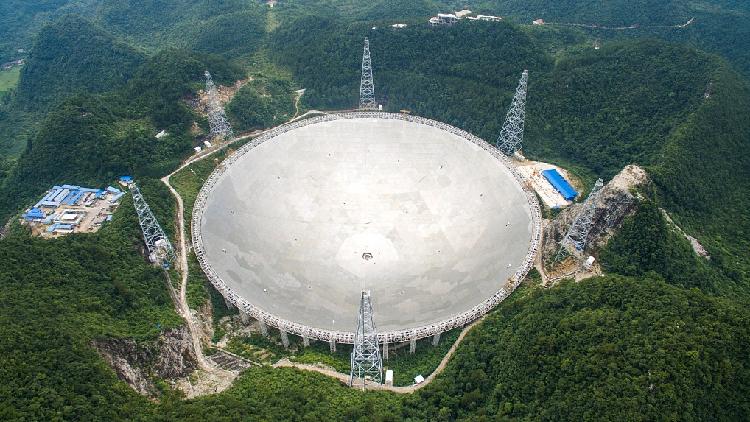

In a significant astronomical advance, scientists have detected for the first time the neutral emission of the hydrogen line from extragalactic galaxies, with the help of the world’s largest radio telescope, which could help enrich the understanding of dark matter.
An international team led by the South American Astronomy Center under the Chinese Academy of Sciences (CAS) worked on the research, analyzing data obtained by the five hundred meter aperture spherical radio telescope (FAST).
The study of detecting extragalactic neutral hydrogen is one of the most important scientific objectives of the gigantic telescope. The scientists detected the neutral emission of three extragalactic galaxies from the hydrogen line using the 19-beam FAST receptor with just five minutes of exposure. This detection shows the extraordinary sensitivity of the telescope.
The research results were recently published in the international journal Astronomy and Astrophysics Letter.
Cheng Cheng, the first author of the research, said that neutral hydrogen gas is the most widespread baryon in galaxies.
“With measurements of neutral hydrogen and carbon monoxide, scientists can estimate the dynamic mass of galaxies at different radii, and can further study baryon and dark matter distributions,” said Cheng, also a CAS researcher.
Although scientists have obtained a substantial amount of data, more observations are still needed. The team will request more FAST observation time to continue studying the properties of neutral hydrogen, Cheng said.
FAST is located in a naturally deep and round karst depression in Guizhou province, southwest China. It began its formal operation on January 11, 2020, after passing a national assessment.
Dark matter is an invisible component of the universe. It is one of the greatest mysteries of modern astronomy.
(Cover image via VCG)
Source (s): Xinhua News Agency